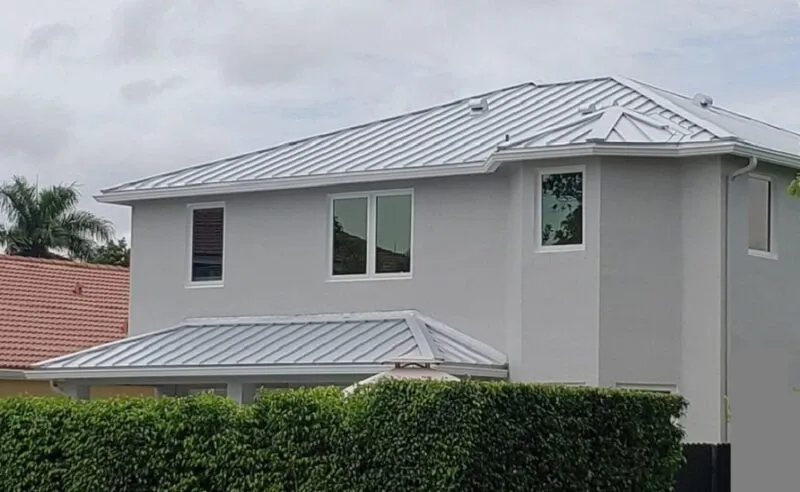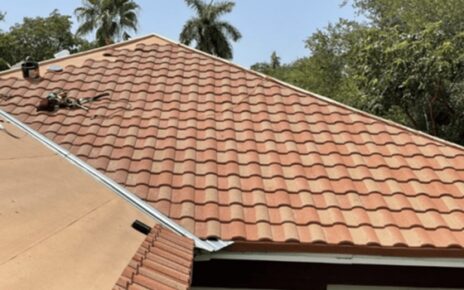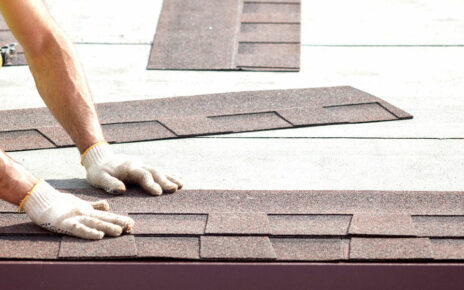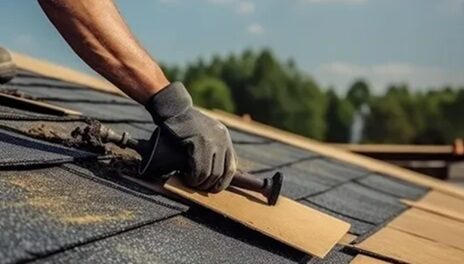When it’s time to replace your roof, homeowners are often faced with a major decision: should you opt for a full tear-off or go with an overlay (also called a re-roof)? Both roof replacement methods come with their pros and cons. Understanding the differences between the two can help you make a smart, cost-effective choice that extends the life of your roof and protects your property.
What Is a Tear-Off Roof Replacement?
A tear-off involves completely removing your existing roofing system down to the decking before installing a new roof. This process gives roofing contractors a chance to inspect the underlying structure for damage and ensure everything is sound before proceeding.
Pros of Tear-Off:
- Longer Lifespan: A tear-off roof typically lasts longer than an overlay because it doesn’t trap old materials underneath.
- Structural Inspection: It allows contractors to check for and repair any hidden damage, like wood rot or mold.
- Better Resale Value: A full tear-off is often seen as a more valuable upgrade, which can improve your home’s resale value.
- Warranty Advantages: Many manufacturers offer longer or more comprehensive warranties when a roof is installed over a clean deck.
Cons of Tear-Off:
- Higher Cost: Because it requires more labor and materials, tear-off jobs tend to be more expensive upfront.
- Longer Installation Time: Removing the old roof adds time to the project timeline, potentially delaying completion.
- More Mess and Noise: Tear-offs are labor-intensive and noisier due to the demolition involved.
What Is an Overlay Roof Replacement?
An overlay involves installing a new layer of shingles directly on top of the existing ones, without removing the old roof.
Pros of Overlay:
- Cost-Effective: Since it requires less labor and fewer materials, overlays are more affordable in the short term.
- Faster Installation: Without the need for removal, overlays can be completed quickly, often in just a day or two.
- Less Disruption: The process is quieter and creates less debris, making it more convenient for homeowners.
Cons of Overlay:
- Shorter Lifespan: Trapping old materials beneath the new layer can reduce airflow and cause premature aging.
- No Deck Inspection: You won’t know if there’s hidden water damage or decay under the old shingles.
- Added Weight: Two layers of shingles add extra weight, which can strain your roof structure over time.
- Limited Warranty: Some manufacturers may not honor full warranties on overlay installations.
Which Option Should You Choose?
The decision often depends on your budget, how long you plan to stay in the home, and the condition of your existing roof. A tear-off is typically the best long-term investment, but an overlay might be suitable if your current roof is in good condition and you’re looking for a budget-friendly short-term solution.
Need Help Deciding? Let the Experts Guide You!
At Florida Roofing and Gutters, we specialize in both tear-off and overlay roof replacements. Our experienced team will inspect your roof, discuss your options, and provide honest recommendations to protect your home and budget.
Contact us today for a free consultation and find out which roofing solution is best for you!
This post was written by a professional at Florida Roofing and Gutters. Florida Roofing and Gutters, founded by Tri-Town Construction, is the best roofing company to turn to for residential and commercial roof replacements and repairs in Southwest Florida.





